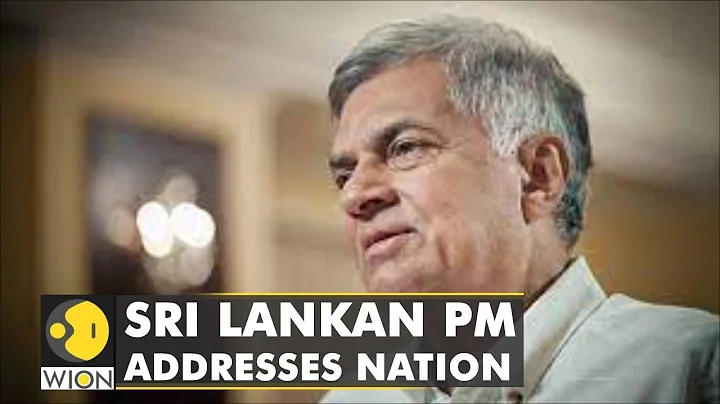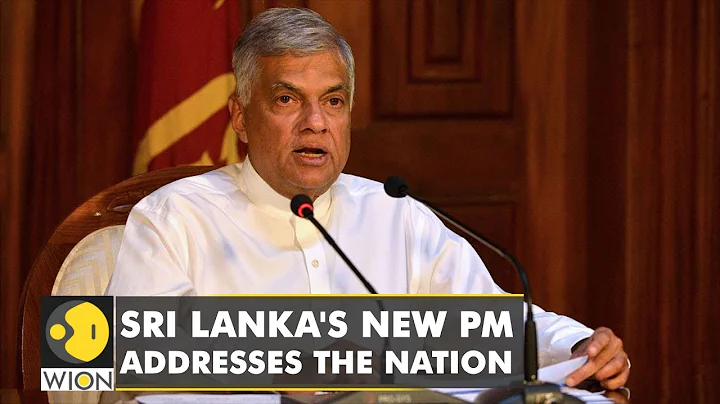Introduction: Since the sovereign debt default in late May, Sri Lanka ’s political and economic situation has gradually fallen into turmoil. On July 5, local time, Prime Minister Wickremesinghe declared the country's bankruptcy to parliament and said that this economic crisis would last until at least the end of 2023. On July 9, thousands of protesters in Colombo, the capital of Sri Lanka, rushed into the president's official residence and set fire to the prime minister's residence. Since then, both the president and the prime minister announced their resignations. On July 13, Sri Lanka once again declared a national emergency. Relevant data shows that Sri Lanka’s total foreign debt has reached US$51 billion and it is no longer able to purchase fuel and other necessities. However, 90% of its domestic households are facing food shortages... Why is Sri Lanka like this? Regarding relevant issues, Liu Zongyi, Secretary General of the China and South Asia Research Center of the Shanghai Institute of International Studies, made the following interpretation:
Observer Network: Currently, Sri Lanka has declared national bankruptcy. President Gotabaya Rajapaksa has also left the country. So, how will the subsequent debt be repaid? How should the chaotic political situation end?
Liu Zongyi: Sri Lanka is currently in a power vacuum. After both the president and the prime minister resigned, in theory, the speaker should take charge of the country. However, Sri Lanka is currently in a state of emergency, so the speaker now plays the role of a convener.
They will hold a meeting of all parties on July 19 and then jointly negotiate to launch the national leader. If nothing else happens, I think there is a high probability that Sajith Premadasa will become the leader of the country. He was the leader of the opposition party United People's Forces, and he was actually very active some time ago.
In the 2019 election, his vote rate was second only to Gotabaya Rajapaksa, losing slightly by 3%. Since the crisis broke out in Sri Lanka, he has insisted on not giving in and has always called for the resignation of both the Prime Minister and the President.
In the massive protests on July 9, Premadasa and the United People's Forces played an important role. It is worth noting that Premadasa has always shown a pro-American and pro-India image. Before the protests, he may have had contacts with the United States and India. The U.S. ambassador to Sri Lanka made public remarks before the demonstration, asking the military and police to give the protesters space to express themselves freely.
As for the debt issue, Wickremesinghe has been negotiating with IMF, hoping to reach an agreement on debt and aid. But because of the political turmoil of the past few days, negotiations are certain to be temporarily halted. If they can successfully elect a leader at the meeting on the 19th, whether it is Premadasa or someone else, the negotiation process may continue only after the new leader comes to power.

Gotabaya Rajapaksa information picture from And it is precisely neoliberalism that has pushed Sri Lanka to this point. Various long-standing shortcomings, stimulated by the Russia-Ukraine conflict, the new coronavirus epidemic and other factors, finally led to the current situation. Do you agree with this attribution analysis?
Liu Zongyi: This analysis makes some sense, because in the past few years, Sri Lanka has been pursuing a debt-financed growth model, which means constantly borrowing money to invest in domestic infrastructure construction and other aspects of development, and then use this to promote economic growth. That is to stimulate the economy by borrowing new debt to repay old debt.
But we must also see that Sri Lanka’s economic model has its own particularities. Although this country is a capitalist country, its full name is the Democratic Socialist Republic of Sri Lanka, which contains certain elements of democratic socialism. It is a universal welfare state, and universal welfare expenditures account for a large proportion of the country's finances.
In the past few years, this considerable expenditure has put Sri Lanka under heavy pressure, and basically every year the budget is in deficit.A lot of funds that should have been used for investment and expansion of production have been used for public consumption. And due to the domestic party system and political party disputes, every government will do some things to increase welfare for the people in order to win elections and win votes. promise. Behind each political party there are large trade union organizations, in order to compete with each other, compare themselves to each other, and push forward welfare commitments.
Therefore, universal social welfare has become a very heavy burden on Sri Lanka’s economic development. If this problem cannot be solved, the country will have the same debt problem in the future. This is number one.

Protesters who stormed into the Presidential Palace
Secondly, Sri Lanka does not have a real advantageous industry. International tourism is its largest industry and one of its main sources of foreign exchange. The second is the textile industry, which has been greatly impacted by countries such as Bangladesh and Vietnam in recent years, so it has no advantage in this regard.
Why can’t Sri Lanka find its own advantageous industries? A very important reason is that they hope to develop industries that are both green and environmentally friendly and can make money, and are not interested in developing manufacturing industries. I think they are indeed deeply influenced by the West in terms of economic development. Under this background, they failed to choose a path suitable for their own development.
In the past two years, the reason why Sri Lanka has had such serious problems is that in addition to the international background and the new crown epidemic, there are also two major mistakes in its own policies. The first is tax reduction, hoping to stimulate people's consumption. However, after people have money, the products they buy cannot be manufactured in Sri Lanka, so a large amount of imported goods is needed, which consumes a lot of foreign exchange. At the same time, fiscal revenue has dropped sharply due to tax cuts. A statement from the Prime Minister's Office said that tax cuts cause an annual fiscal revenue loss of approximately US$2.2 billion.
The second misstep was the sudden promotion of organic agriculture. The original intention may have been to limit the import of chemical fertilizers and pesticides and reduce foreign exchange expenditures, but Sri Lanka does not have the scientific and technological foundation to develop a green organic industry. In the absence of such a foundation, it is completely a policy mistake to force people to develop organic agriculture without using chemical fertilizers or pesticides.
Observer Network: In terms of development model, what kind of warning does Sri Lanka’s political and economic crisis provide to South Asian countries?
Liu Zongyi: actually provides a very serious warning not only to South Asian countries, but also to the vast number of developing countries, especially small and medium-sized developing countries. Because Sri Lanka is experiencing such a serious crisis, there is another very important background, which is the US dollar interest rate hike .
The United States and the West are currently hyping it because the conflict between Russia and Ukraine has caused a shock to the global economy. Of course, this is indeed a very important factor, but we cannot ignore the role that the Fed's interest rate hikes played in the entire deterioration process.
Because the Federal Reserve has raised interest rates and international capital has returned to the United States, the majority of small and medium-sized developing countries are facing a very severe capital shortage. In fact, for the United States, this is a process of cutting leeks, and it is sucking the blood of the vast number of developing countries, including Sri Lanka. The same is true for Pakistan , because Pakistan is now second only to Sri Lanka in the severity of its foreign debt in South Asia. For example, Turkey , Egypt , Argentina and other countries are facing similar situations.
Under this situation, we must consider the background of US dollar interest rate hikes. Sri Lanka has its own factors for reaching this situation, but for other developing countries, the international economic background, especially the US dollar interest rate hike and the Russia-Ukraine conflict, may be the decisive factor. Of course, for these countries, if they want to achieve development, just like Sri Lanka I just talked about, they must find their own development paths and advantageous industries based on their own advantages. This is a must.
Bangladesh has developed relatively well in the past few years. Compared with Sri Lanka, apart from its large population, Bangladesh's natural conditions in all aspects are actually not as good as Sri Lanka. However, it has found an advantageous industry suitable for its own development - ready-made garments. manufacturing.At the same time, it relies on the "Belt and Road Initiative" and capital from the West and the East to develop its own infrastructure and promote the growth of advantageous industries. Last year, Bangladesh's GDP per capita exceeded that of India, and its GDP growth rate has been 7% to 8% every year for many years, which should be the highest among South Asian countries. I think this is a very sharp contrast to Sri Lanka.

Bangladesh is the first South Asian country to have electricity throughout the country, entering a new era of full electricity coverage. Xinhuanet data map
This comparison is not only suitable for Bangladesh and Sri Lanka, but also for Bangladesh and Pakistan. Bangladesh also faces some threats of terrorism, but compared to Pakistan, its methods of dealing with terrorism are very strict, and its control of social stability is much better. It is also relatively stable politically, and various political factions have a strong influence on the economy and society. development and reached a consensus with each other.
Observer Network: India has always been concerned about the situation in Sri Lanka and has provided it with a loan of more than 4 billion US dollars. Indian Foreign Minister Jaishankar once said that India has been working hard to assist Sri Lanka and noted that there is currently no refugee crisis in Sri Lanka. But what about the future? India seems to have no clear plan. How do you interpret India’s current attitude towards Sri Lanka?
Liu Zongyi: Now, some Sri Lankans have fled abroad, and many people have sneaked into India, Australia and other countries on fishing boats. Judging from the statements of some Indian strategic scholars, they want to take this opportunity to squeeze out China's influence from Sri Lanka. In this regard, India has been making constant moves in the past, including squeezing out Chinese investment projects in northern Sri Lanka and areas close to India, and then moving on to India's own projects. In addition, India has been very active in terms of development issues in Trincomalee and large-scale assistance to Sri Lanka.
In addition, some radical Indian politicians have asked the Indian army to intervene in the situation in Sri Lanka, and some have even proposed to make Sri Lanka a part of India. Of course, this view has been rejected by the Modi government.
This article is an exclusive manuscript of Observer.com. The content of the article is purely the author's personal opinion and does not represent the platform's opinion. It may not be reproduced without authorization, otherwise legal liability will be pursued. Follow Observer.com on WeChat guanchacn and read interesting articles every day.





















